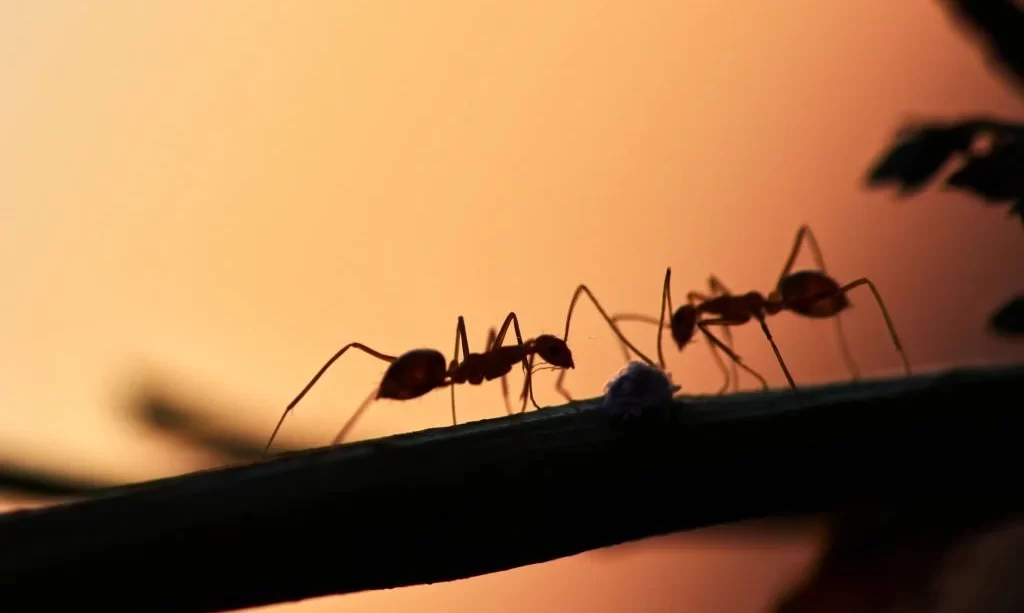Ants, those industrious little insects that seem to be always on the move, have captured our curiosity for generations. We often spot them busily foraging for food, marching in orderly lines, and working together as a well-coordinated team. But have you ever wondered if ants continue their tireless activities when the sun goes down? In this article, we embark on a journey to unveil the nocturnal habits of ants. Do these tiny creatures venture out into the darkness, or do they take a break from their bustling routines at night? To answer these questions, let’s first acquaint ourselves with the world of ants.
Meet the Ants
Ants, belonging to the family Formicidae, are social insects known for their distinctive appearance and complex societies. These small creatures, usually measuring just a few millimeters in length, are characterized by their segmented bodies, six legs, and, in many species, powerful jaws. Ants are highly social insects, living in organized colonies with specific roles for workers, soldiers, and a queen. They exhibit impressive teamwork and communication through chemical signals. Ants are not just fascinating due to their societal structures but also because of their ecological significance.
Ant Daily Routines
Ants are diurnal creatures, which means they are primarily active during the daytime. Their daily routines revolve around foraging for food, maintaining their nests, caring for their young, and defending their territory. Ants have a remarkable ability to follow scent trails laid down by their fellow workers, which aids them in locating food sources and returning to the nest with their bounty. These industrious insects play essential roles in ecosystems by serving as scavengers, pollinators, and even predators of other small insects. Understanding their diurnal activities provides a foundation for exploring whether they also venture out into the night.
Nocturnal Ants
While many ant species are primarily active during the day, there are indeed nocturnal ants that prefer the cover of darkness for their activities. Nocturnal ants have evolved to thrive in the nighttime environment, where they can exploit different ecological niches. These ants exhibit fascinating behaviors, often differing from their diurnal counterparts. They have adapted to low light conditions, which allows them to hunt for food, explore new territories, and carry out essential tasks in the relative safety of the night.
Reasons for Nighttime Activity
The shift to nighttime activity in some ant species can be attributed to several factors. Temperature and humidity often play a significant role. In many regions, nighttime temperatures are more moderate, providing a more suitable environment for ant activities. Additionally, nighttime activity can help certain ant species avoid predators that are active during the day. For some nocturnal ants, the darkness offers protection and reduces the risk of encountering daytime threats.
Identifying Nocturnal Ant Species
Identifying nocturnal ant species can be a rewarding endeavor for those interested in observing their nighttime activities. Nocturnal ants often have specific adaptations, such as larger eyes and elongated antennae, to help them navigate in low light conditions. To identify these species, you can conduct observations at night using a flashlight or headlamp and look for ants that are active during the darkness. Pay attention to their behaviors, such as foraging or nest maintenance, which can provide clues about their nocturnal habits.
Conclusion
In conclusion, the world of ants is not confined to the daylight hours alone. While most ants are diurnal and conduct their bustling activities during the day, there are fascinating exceptions in the form of nocturnal ants. These ants have evolved to thrive in the darkness, where they carry out essential tasks and interact with their environment. The reasons for their nighttime activity are diverse, often related to temperature, humidity, and predator avoidance. As we continue to explore the rich diversity of ant species, both diurnal and nocturnal, we gain a deeper appreciation for these remarkable insects and their adaptability to various ecological niches.



